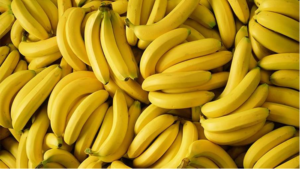
Understanding inflation dynamics is crucial for the conduct of monetary policy. However, official inflation statistics are published only with a time lag. Hence, central bankers are interested in “nowcasting” inflation, among other variables. Nowadays we have data on prices of individual products posted every day on the internet. In order to do nowcasting, we need a mapping between any particular product and the official statistical classification: is “chocolate chip cookie ice-cream” a baked good or a refrigerated dessert? Web-scraped price data have been studied by others like in the Billion Prices Project, but nobody has yet produced a detailed mapping from individual products to the statistical classification. The question is: How to categorise millions of products into standard statistical categories that require expert knowledge for classification?
The classification scheme for products that we use is COICOP (Classification of Individual Consumption According to Purpose), which is published by the United Nations Statistics Division and enhanced nationally.
COICOP has over 300 (sub)-categories. Each category is described only textually.

Product: Super Banana
COICOP Classification:
01 Food and non-alcoholic Beverages
01.1 Food
01.1.6 Fruit
01.1.6.1 Fresh or chilled fruit

Product: Frozen Sandwich, Sausage, Egg & Cheese
COICOP Classification:
01 Food and non-alcoholic Beverages
01.1 Food
01.1.9 Food products n.e.c.
01.1.6.1 Ready-made meals
This may be intuitive for a person, but an algorithm could also easily classify it as sausage, cheese, eggs or bread.
There are more complex examples where similar products need to be put in different categories.
An interesting approach could be that experts classify only some products and then a machine learning algorithm learns from that and predicts the classification of new products.
However, a multitude of algorithms are available and it is not obvious which one to choose that gives the best prediction.
Additionally, we also have significant emphasis on the operation of the classifier in a production system:
As a first step, we partnered up with the Frankfurt School of Finance, Marktguru and Google in a Hackathon with students from different universities and professionals with a common joint interest in applied data science, to address those problems.
In autumn, we plan to start a project based on innovative cloud solutions to model inflation based on online shop price data covering several European countries. The Hackathon is one of the numerous important inputs to the project. In an iterative approach, we will then extend the project to enable an AI-driven nowcasting inflation.
 Co-author
Co-author
Dr. Jörn Franke, IT Expert at European Central Bank
 Co-author
Co-author
Dr. Chiara Osbat, Adviser at European Central Bank
This text should not be reported as representing the views of the European Central Bank (ECB). The views expressed are those of the authors and do not necessarily represent those of the ECB.